Is hiking a sport or hobby? This question has been the topic of debate among outdoor enthusiasts and armchair adventurers alike. While some argue that hiking is a popular leisure activity, others believe that it involves physical exertion in mountainous areas and therefore qualifies as a sport. In this article, I will explore the arguments for and against hiking being considered a sport or a hobby.
To begin with, it is important to define what constitutes a sport and a hobby. According to the Oxford Dictionary, a sport is defined as “an activity involving physical exertion and skill in which an individual or team competes against another or others for entertainment.” On the other hand, a hobby is defined as “an activity done regularly in one’s leisure time for pleasure.” Based on these definitions, it can be argued that hiking can be both a sport and a hobby, depending on the individual’s perspective and the type of hiking they are doing.

There are different types of hiking that exist, such as trail hiking, backpacking, and mountaineering, each with its own level of physical exertion and skill required. Some argue that hiking should be considered a sport because it involves physical exertion and skill, while others argue that it is a leisure activity that can be done for pleasure. In the following sections, I will explore the arguments for hiking being considered a sport and a hobby, respectively.
Key Takeaways
- Hiking can be considered both a sport and a hobby, depending on the individual’s perspective and the type of hiking they are doing.
- The definition of a sport involves physical exertion and skill in which an individual or team competes against another or others for entertainment.
- The definition of a hobby is an activity done regularly in one’s leisure time for pleasure.
Is Hiking a Sport or Hobby?
As someone who has been hiking for years, I can confidently say that hiking can be both a sport and a hobby, depending on how you approach it.
For many people, hiking is pursued as a hobby. It’s a leisurely activity that allows them to connect with nature, enjoy scenic views, and unwind from the daily hustle and bustle. Hiking can be a low-cost activity that can be enjoyed by people of all ages and fitness levels. It’s a great way to get outside and explore your surroundings.
However, for others, hiking is pursued as a sport. They may engage in more challenging and competitive hikes, aiming to improve their performance, set records, or participate in organized events. These individuals may train specifically for hiking and push themselves to their physical limits.
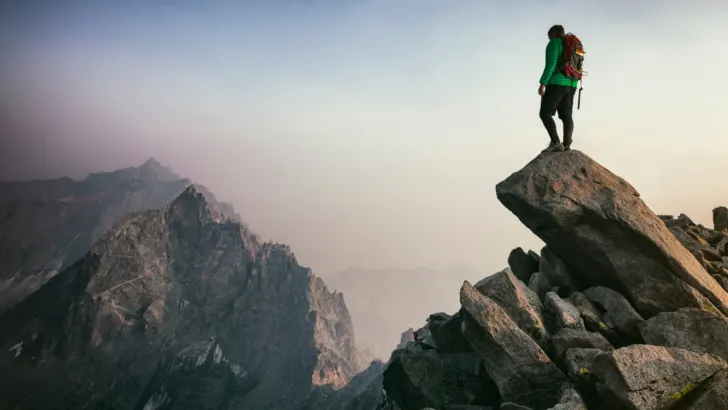
Regardless of how you approach hiking, it’s important to remember that safety should always be a top priority. Make sure you have the proper gear, stay hydrated, and be aware of your surroundings.
In conclusion, whether you view hiking as a sport or a hobby ultimately depends on your personal goals and motivations. It’s a versatile activity that can be enjoyed in a variety of ways, and there’s no right or wrong way to do it.
The Definition of a Sport
When discussing whether hiking is a sport or a hobby, it is important first to establish what defines a sport. According to the Oxford English Dictionary, a sport is defined as “an activity involving physical exertion and skill in which an individual or team competes against another or others for entertainment.”
This definition highlights several key elements of what makes an activity a sport. Firstly, it involves physical exertion, meaning that the activity requires a certain level of physical effort from the participant. Secondly, it requires skill, indicating that the activity involves a level of mastery or proficiency. Finally, it involves competition, meaning that the activity is typically done with the goal of winning or achieving a certain outcome.

While hiking does involve physical exertion and skill, it is not typically done in a competitive context. Hiking is generally considered a leisure activity, done for the purpose of enjoying nature and getting exercise. However, some argue that certain types of hiking, such as mountaineering or trekking, can be considered a sport due to the level of physical exertion and skill required.
Ultimately, the definition of a sport is subjective and can vary depending on the individual and the context. While some may consider hiking to be a sport, others may view it as a hobby or leisure activity.
The Definition of a Hobby
As someone who loves hiking, I have often wondered whether it is a sport or a hobby. To answer this question, it is important to understand what a hobby is. According to the Merriam-Webster dictionary, a hobby is “an activity or interest pursued for pleasure or relaxation and not as a main occupation.”
Hobbies are typically done during one’s free time and are not done for monetary gain. They are often seen as a way to escape the stresses of everyday life and to engage in something that brings joy and satisfaction.
Hiking can certainly be seen as a hobby. It is an activity that is often done on weekends or during vacations, and it is not typically done for monetary gain. Hiking allows people to explore nature, get some exercise, and recharge their batteries.

However, it is important to note that hiking can also be taken to a more competitive level. There are hiking races and competitions, and some people may train specifically to improve their hiking skills and speed. In these cases, hiking may be seen more as a sport than a hobby.
Is Hiking a Sport or Hobby? Overall, whether hiking is considered a sport or a hobby may depend on the individual and their level of involvement in the activity. For many people, hiking is simply a way to enjoy nature and get some exercise, making it a hobby.
The Arguments for Hiking Being a Sport
As an avid hiker myself, I have often wondered whether hiking should be considered a sport or simply a leisure activity. After conducting some research and considering my own experiences, I believe that there are several compelling arguments for classifying hiking as a sport.
Is Hiking a Sport or Hobby – Physical Demands
Beyond the breathtaking landscapes and serene trails, hiking unveils an intriguing facet that underpins its classification as a sport—the remarkable physical demands it places on the human body. The terrain you tread upon during a hike is not just a pathway; it becomes a testing ground for your physical prowess, resilience, and determination.
Hiking stands as a symphony of challenges, demanding more from your body than a casual stroll ever could. The uneven terrain, characterized by rocky paths and undulating surfaces, beckons you to navigate with precision and strength. Steep inclines introduce an element of struggle, pushing your muscles to embrace the uphill battle with every step. And as your journey unfolds across extensive distances, it’s your endurance that takes center stage, ensuring you persevere through every mile.
This physical dance with the wilderness is a harmonious symposium for your body’s capabilities. Your cardiovascular health witnesses an elevation as your heart pumps with determination, oxygenating your muscles and organs. Strength becomes your steadfast companion, aiding you in conquering obstacles that may have seemed insurmountable at first glance. The culmination of these efforts fosters a profound increase in endurance—an enduring testament to your commitment to pushing boundaries.
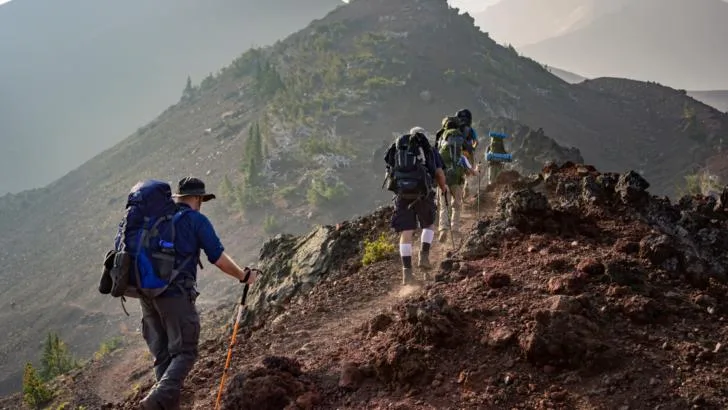
What may start as a footfall on a trail soon evolves into a transformative experience, reshaping your body’s limits and capacities Hiking’s physical demands don’t just shape your muscles; they sculpt a narrative of resilience, a testament to the remarkable harmony between human determination and nature’s challenges.
Is Hiking a Sport or Hobby – Competitive Opportunities
While the serene solitude of hiking is undoubtedly captivating, there exists an exhilarating dimension that often remains hidden—a world where the trail transforms into a competitive arena, and the pursuit of personal bests takes center stage. The hiking community harbors a captivating spectrum of competitive opportunities that invite individuals to test their mettle against not just nature’s challenges, but also fellow adventurers.
In the vast tapestry of hiking, competition weaves threads of excitement that transcend the perception of solitary exploration. Enthusiasts with a taste for challenge vie to claim the title of the fastest summit, dashing up mountains with unparalleled determination and speed. The allure of pushing limits finds expression in the quest to conquer long-distance trails in record time—a race against both the clock and the elements.

Venturing further into this dynamic domain, the world of organized hiking races and events beckons those hungry for a different kind of trail experience. These gatherings draw participants from across the globe, converging to engage in spirited battles against both the wilderness and each other. The atmosphere hums with camaraderie and competitiveness as like-minded souls join forces, propelled by the shared goal of triumphing over the route’s challenges.
The competitive spirit is an unexpected facet of hiking that transforms the trail into a realm of determination, strategy, and achievement. It amplifies the pulse of adventure, inviting hikers to discover the rush that comes from challenging themselves and others in a setting where nature’s beauty coexists harmoniously with the thrill of competition.
Is Hiking a Sport or Hobby – Technical Skills
Hiking, with its allure of unspoiled landscapes and breathtaking vistas, is not just a footfall on a trail—it’s a journey that demands a unique blend of physicality and technical prowess. As hikers venture into more challenging terrains, a world of technical skills unfurls, empowering them to conquer nature’s intricacies with confidence and strategy.
Navigation becomes an art in itself, transcending the act of simply following a trail. Armed with a map and compass, hikers embark on a journey of orienteering, deciphering the landscape’s secrets, and carving pathways through uncharted territories. The mastery of navigation is a testament to the symbiosis of nature’s guidance and human ingenuity.
Beyond the trail’s allure lie potential hazards, waiting to be identified by vigilant hikers. The ability to read the terrain, anticipate obstacles, and make informed decisions about the safest route is a valuable skill that transforms each step into a calculated choice. It’s a dance of vigilance and adaptability, where every stride is a testament to the hiker’s keen understanding of the environment.

Technical skills also encompass the effective use of specialized equipment, a realm where hikers step into the role of adaptors to varying conditions. Snowy or icy landscapes invite the deployment of crampons and ice axes, instruments that transform potential peril into secure progress. The synergy between the hiker and the equipment is a harmonious symphony, epitomizing the fusion of human dexterity and the tools that amplify it.
In this exploration of technical skills, hiking transcends the realm of mere outdoor activity. It evolves into a dynamic mastery that blends cerebral acumen with physical prowess, empowering hikers to become architects of their journeys. As hikers unlock the vault of technical skills, they unravel a profound journey where every step is infused with knowledge, strategy, and triumphant exploration.
Is Hiking a Sport or Hobby – Mental Toughness
Beneath the serene landscapes and invigorating trails, the heart of hiking beats with an unyielding pulse of mental toughness—a journey within that transcends the physical footfalls and taps into the depths of the hiker’s spirit. As the terrain evolves and challenges surge, a hiker’s mental fortitude becomes an indispensable companion, guiding them through a mental odyssey of unmatched proportions.
Hiking unfurls as a canvas where mental toughness finds its truest expression. Physical discomfort, fatigue, and the relentless push against personal limits define this journey. In each step, hikers find themselves in a face-off against their own boundaries, proving to themselves that adversity can be conquered through sheer determination. The mental struggle becomes a parallel narrative to the physical one, a tale of empowerment etched in every footprint.
The art of maintaining focus and alertness in the face of potential danger ushers in a mental discipline that hikers hone on the trails. The environment can change in an instant, and a hiker’s capacity to remain vigilant creates a safety net that transcends the ordinary. The mental ballet of processing information, assessing risks, and making swift decisions enhances the hiker’s capability to navigate the unpredictable with acumen.
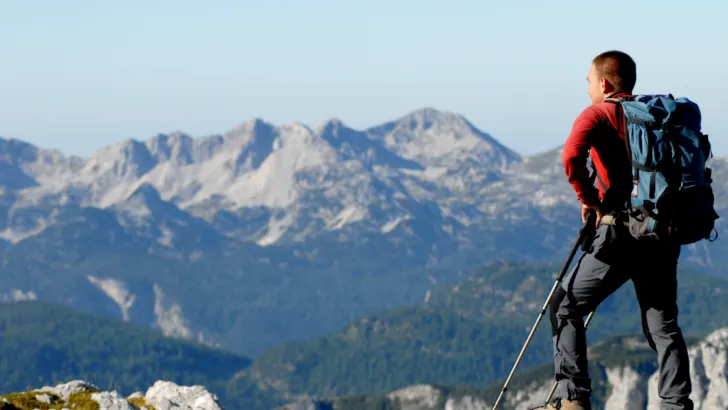
And then, there’s the resolute optimism that blooms even in the harshest of weather conditions. The rain-soaked trails and wind-whipped ridges become stages where hikers enact a dance of unwavering positivity. The ability to find beauty in adversity, to derive joy from the midst of discomfort, showcases the profound impact of a hiker’s mental stance on the journey itself.
As the journey culminates, the debate surrounding hiking’s classification as a sport unveils a compelling facet—the amalgamation of physical demands, technical mastery, competitive opportunities, and mental toughness. These elements create a mosaic that transcends mere activity, weaving together a tapestry of personal transformation, exploration, and resilience. Hiking, in its entirety, becomes a testament to the power of the human spirit against nature’s grand stage.
The Arguments for Hiking Being a Hobby
As an avid hiker, I firmly believe that hiking is a hobby rather than a sport. Here are some of the reasons why:
1. No Competitions or Tournaments
In the realm of defining sports, the cornerstone often rests upon the presence of fierce competition and the allure of tournaments that ignite fervor among participants and spectators alike. Yet, in the serene embrace of hiking, an altogether different narrative unfolds—a journey that resists the realms of winners and losers, challenging the conventional understanding of sportsmanship.
Hiking stands as a testament to the intrinsic essence of non-competitiveness. Unlike traditional sports, the trails do not echo the clamor of rivals battling for supremacy. Hikers share a journey rather than a competition, traversing landscapes not to outrun each other, but to befriend the realms of nature. This divergence from the competitive landscape underscores that hiking, while physically demanding, thrives in a realm free from the confines of rivalry.
In the heart of hiking, there are no podiums adorned with gold, silver, or bronze. The summit reached or the distance conquered is not an emblem of triumph over others, but a personal achievement that resonates with self-discovery and accomplishment. The pressure to outshine fellow hikers fades into the background, allowing the focus to shift to the more profound pursuit—soaking in the splendor of nature, cherishing each stride, and relishing the simple act of moving forward.

Hiking is an ode to the unhurried pace of the journey, a melody where the rhythm is dictated by the heartbeat of nature rather than the tick of a stopwatch. The trails offer a sanctuary where the primary competition is an inner one—surmounting one’s own limits, breaking through mental barriers, and experiencing the exhilaration of achievement without the gaze of comparison.
In this sanctuary, the essence of hiking weaves a tapestry where camaraderie and shared admiration for nature take precedence over triumph or defeat. The hiker’s journey becomes an ode to unity with the environment, an exploration that unites souls in their pursuit of tranquility and breathtaking landscapes. This absence of competitive fervor forms the heartbeat of hiking, reminding us that not all journeys are measured in wins and losses, but in the immeasurable joy of each step and the serenity of nature’s embrace.
2. No Set Rules or Regulations
In the realm of traditional sports, the echo of rules and regulations is an omnipresent symphony, orchestrating the flow of competition and the pursuit of victory. Yet, in the mesmerizing tapestry of hiking, the very absence of structured rules fosters an unparalleled canvas of liberation—an invitation to embrace uncharted paths, forge individual rhythms, and experience the journey on uniquely personal terms.
Hiking stands as a haven of autonomy, where the trails themselves become the guide, and hikers the architects of their own routes. The liberating breeze of freedom wafts through the air as each step becomes an exploration of personal preference. Paths unfurl without constraints, painted by the whims and curiosities of the hiker’s heart, rather than dictated by rigid regulations.
The pace becomes a symphony of individual cadences, a manifestation of personal energy and connection with nature. Each hiker becomes the conductor of their journey, setting their own rhythm to the beat of their footsteps, unburdened by external directives. The trails, devoid of predetermined markers, transform into a realm where hikers are free to wander as their heart desires, tracing pathways guided by their own intuition.
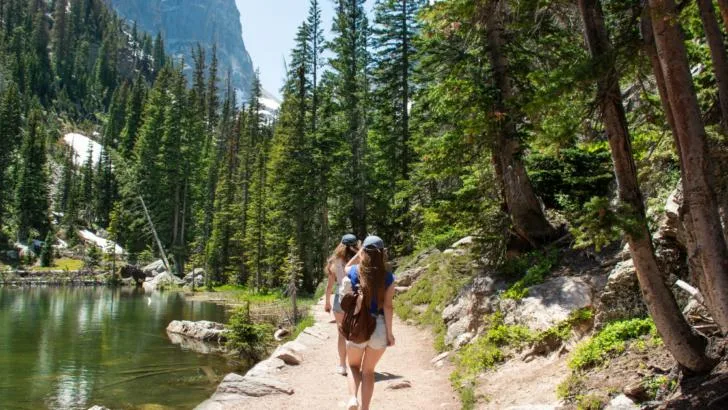
In this unfettered realm, the distance becomes a limitless expanse, stretching as far as the spirit is willing to venture. Unlike structured sports with prescribed time limits, hiking extends an open-ended invitation to explore at one’s own pace. The clock’s relentless ticking is replaced by the tranquility of walking without bounds, where the only measure of success is the embrace of the journey itself.
In this dance with freedom, there exists a space for breaks as needed—a pause to drink in the beauty, capture a fleeting moment in photographs or simply rest and reflect. Hiking doesn’t prescribe when to halt or for how long; the pauses are orchestrated by the hiker’s comfort and rhythm, allowing for the genuine connection with the surroundings to be savored fully.
Hiking’s canvas is an unscripted masterpiece, where the hiker takes center stage, not as a participant in a rigid competition, but as a soul seeking communion with nature’s beauty. The absence of rules engenders an unburdened odyssey, an immersion into the heart of exploration, where every trail chosen, every step taken, and every pause embraced becomes an unrepeatable chapter in a story written by the hiker’s soul.
3. Low-Cost and Accessible
In a world where hobbies can often come accompanied by hefty price tags and an array of specialized equipment, hiking emerges as a liberating exception—an endeavor that celebrates accessibility and simplicity. The trails, with their inviting embrace, beckon both novices and seasoned adventurers alike, unfurling a realm where the entry is as uncomplicated as the journey itself.
Hiking thrives as a testament to the unpretentious. Unlike many hobbies that require elaborate gear, hiking’s prerequisites are humble and fundamental. A pair of dependable hiking shoes—crafted to navigate diverse terrains—an unassuming backpack to carry the essentials, and a vessel to hold the elixir of hydration—these simple tools are the passport to embark upon a world of exploration.
The trails, like silent storytellers, are woven into the fabric of the landscape, etching pathways that span urban oases, serene woodlands, and rugged mountains. Accessibility becomes the heart of hiking, with trails spanning a tapestry that crisscrosses locations near and far. There’s no need to embark on elaborate journeys or undertake extravagant expenses; the gift of hiking is an open invitation found right in your backyard and beyond.
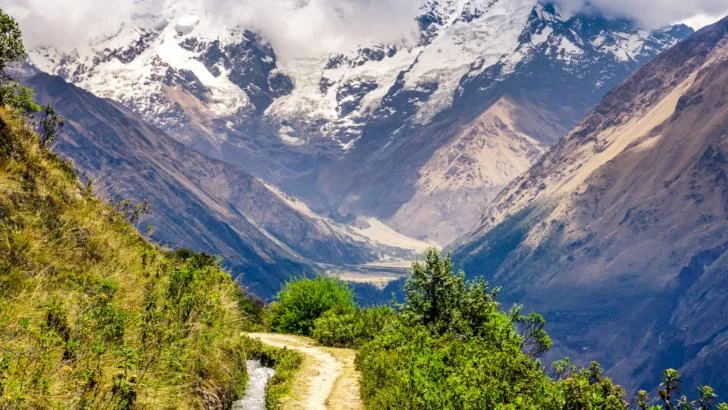
In the realm of hiking, the trails are akin to whispered secrets shared by nature herself. These trails are easily within reach, regardless of where you reside. Whether amidst bustling cities or tucked away in the countryside, they beckon with arms wide open, ready to offer a slice of solitude or camaraderie, depending on your heart’s desire.
Hiking isn’t confined by hefty fees or exclusive memberships. There are no extravagant dues to access the trails, nor are there complex itineraries that require meticulous planning. Instead, the trails lay out an egalitarian canvas—a realm where the open sky and verdant landscapes welcome all who seek refuge from the demands of daily life.
As the sun rises or sets on the horizon, the spirit of hiking thrives on the philosophy that joy knows no price. With hiking, the essence of exploration is accessible to everyone, offering a testament that adventure doesn’t require lavish expenditure or convoluted preparations. It’s a tapestry where the simplicity of a path, the harmony of footsteps, and the embrace of nature are all that’s truly needed to savor the art of hiking.
4. Mental and Physical Benefits
Within the embrace of hiking trails lies a treasure trove of wellness that enriches both body and mind—a realm where the fusion of nature’s beauty and physical movement crafts a tapestry of rejuvenation and vitality.
Mental well-being finds solace in the rhythm of hiking. The trails, winding through serene landscapes, become a sanctuary where stress is swept away by the gentle rustle of leaves and the soothing whispers of nature. As each step is taken, the burdens of the world are shed, making room for clarity and a sense of calm. The symphony of nature becomes an elixir for the mind, washing away anxiety and ushering in a tranquility that only the great outdoors can provide.
The trails, more than mere pathways, become conduits of mood elevation. The symphony of bird songs, the dance of sunlight filtering through leaves, and the panoramic vistas that unfold before the eyes weave a tapestry of positivity. The endorphins released during the hike infuse the spirit with euphoria, leading to an improved mood that lingers long after the journey’s end.
Hiking doesn’t merely sculpt physical endurance; it molds a temple of strength and health. This low-impact exercise beckons the heart to beat with vitality, improving cardiovascular health with every beat. Muscles, too, find transformation, emerging stronger with each undulating terrain conquered. The act of walking, a seemingly simple movement, unfolds as a sculptor of flexibility, allowing the body to move with grace and adaptability.
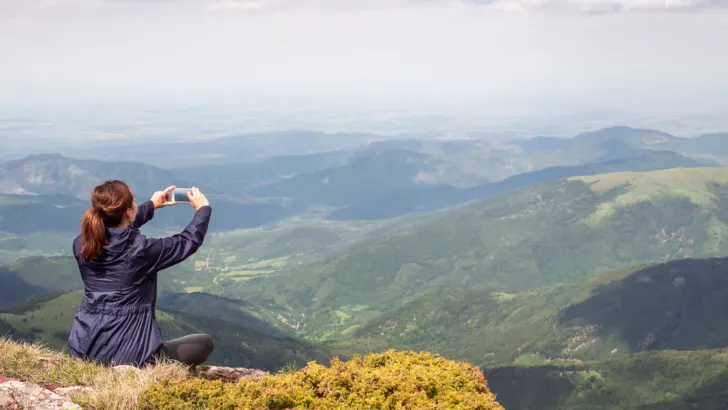
In the grand tale of well-being, hiking serves as a dynamic chapter that bridges the gap between the mental and the physical. The trails offer an oasis for the soul, a retreat from the cacophony of life, and an embrace of serenity. Meanwhile, the body is the canvas that reaps the benefits—strengthened, rejuvenated, and revitalized, ready to face life’s challenges with renewed vigor.
So, within the folds of hiking, a holistic symphony emerges—a melody that uplifts the spirit, elevates mood, and nurtures the body. It’s a harmony where mental tranquility is nurtured by nature’s embrace, and physical resilience is sculpted with every step taken. Hiking isn’t merely a walk in the woods; it’s an embrace of well-being that leaves an indelible imprint on the very essence of one’s being.
In conclusion, while some may argue that hiking is a sport, I firmly believe that it is a hobby. Hiking is all about enjoying the journey, taking in the beauty of nature, and reaping the mental and physical benefits that come with it.
Is Hiking a Sport or Hobby? Depending on the Individual’s Perspective and the Type of Hiking They Are Doing
As I researched and read about the topic, it became clear that whether hiking is considered a sport or a hobby depends on the individual’s perspective and the type of hiking they are doing. Some people view hiking as a leisurely activity, while others see it as a competitive sport.
For those who view hiking as a sport, they may participate in activities such as speed hiking or endurance hiking, where they aim to achieve a certain time or distance. These types of hikers may also participate in races or competitions, where they compete against others. In this context, hiking can be considered a sport as it involves physical exertion and skill, and there is an element of competition.

On the other hand, those who view hiking as a hobby may participate in more leisurely hikes, where they take in the scenery and enjoy the outdoors. These types of hikers may not be concerned with speed or distance and may take breaks or stop to take photos. For them, hiking is a way to relax and unwind, and they may not consider it a sport.
It’s important to note that hiking can be both a sport and a hobby, and there is no right or wrong way to approach it. It all depends on the individual’s perspective and what they hope to achieve from their hike. Additionally, the type of hiking trail and terrain can also impact whether it’s viewed as a sport or a hobby. For example, a leisurely hike on a flat trail may be viewed as a hobby, while a challenging hike up a mountain may be viewed as a sport.
In conclusion, whether hiking is considered a sport or a hobby is subjective and depends on the individual’s perspective and the type of hiking they are doing. Hiking can be a great way to stay active and enjoy the outdoors, regardless of how it’s viewed.
Different Types of Hiking
As someone who enjoys hiking, I know that there are many different types of hiking out there. Each type of hiking offers a unique experience, and it’s important to understand what each type entails before embarking on a hiking trip.
Trail Hiking
Within the vast tapestry of hiking experiences, trail hiking emerges as the cornerstone—a cherished path that beckons adventurers to step into the embrace of nature’s splendor. It’s a journey that transcends mere footsteps, revealing an intricately woven narrative of exploration, exercise, and communion with the great outdoors.
Trail hiking unfurls as a tribute to accessibility and diversity. The trails, etched with care through parks and nature reserves, form an invitation that all can heed. These established pathways, ranging from gentle ambling trails to rugged journeys that dare to ascend steep inclines and navigate rocky terrains, present a spectrum of experiences, catering to every hiker’s inclination.
Embarking on a trail is akin to opening the pages of a nature’s book. With each stride, the story unfolds—the rustling leaves, the melodies of birdsong, and the fragrance of earth all harmonize to create an immersive symphony. The easy, flat trails provide a gateway for beginners, offering a leisurely introduction to hiking’s embrace. The more challenging trails, with their undulating landscapes, summon the spirit of adventure, testing the hiker’s mettle and offering communion with nature’s raw beauty.

Trail hiking isn’t just a journey for the body; it’s a balm for the soul. As feet tread upon the earth, a rhythm forms, echoing the heartbeat of the natural world. The rustle of leaves and the soft caress of the wind craft a serenade that resonates within. With each step, the mind finds solace, the heart finds joy, and the spirit finds renewal.
The trails, while varied in difficulty, unite hikers in a shared pursuit—the dance with nature’s allure. It’s an arena where the connection with the environment is palpable, and the camaraderie with fellow hikers often blooms spontaneously. The act of walking becomes a bridge, fostering conversations, and forging bonds that defy the boundaries of everyday life.
Trail hiking, indeed, becomes a symphony where the orchestra is composed of the elements—sunlight filtering through leaves, the earth’s aroma, and the panoramic vistas that paint the horizon. It’s a journey that transcends the physical—transforming each step into an act of mindfulness, each breath into an exchange with nature’s essence. So, whether it’s the easy trails that offer serenity or the challenging ones that summon courage, trail hiking remains a harmonious melody—an ode to nature’s splendor and a tribute to the human spirit’s enduring pursuit of exploration.
Backpacking
Within the realm of hiking, there exists a pursuit that transcends the ordinary—an expedition known as backpacking. This endeavor invites adventurers to become nomads of nature, carrying their world upon their shoulders and setting forth on a journey that defies the boundaries of time. It’s an odyssey where the trails become a lifeline, and the journey becomes a symphony of self-sufficiency and uncharted horizons.
Backpacking isn’t merely about traversing landscapes; it’s about creating life within nature’s embrace. As hikers hoist their burdens—tents, sleeping bags, cooking equipment, and sustenance—onto their backs, the trails become more than a conduit; they evolve into a lifeline that weaves through woods, over mountains, and along rivers. It’s a journey where the rhythm of footsteps is interspersed with the melody of rustling leaves, and each step carries the weight of independence and self-reliance.
The notion of time in backpacking is a concept that morphs. This isn’t a journey to be rushed; it’s a passage that embraces the unhurried cadence of life. Backpacking, be it a brief escapade beneath the stars or a months-long exploration of distant landscapes, calls for an alliance with patience—a willingness to be a participant in nature’s chronicle.
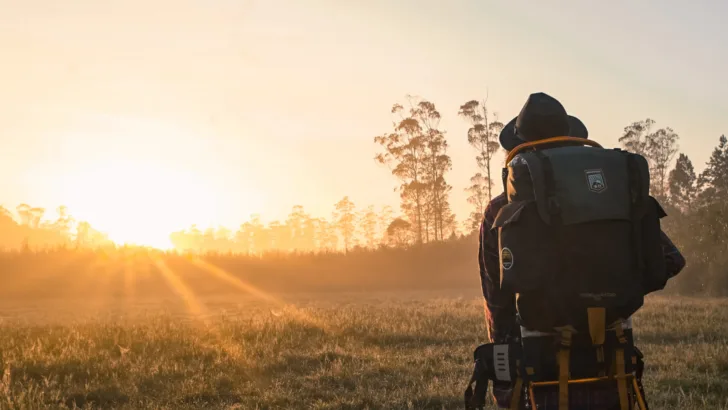
Preparation becomes a compass that guides backpackers on this voyage. Each piece of gear, each morsel of sustenance, and each detail of route and itinerary carries the weight of thoughtful planning. Backpacking dances on the edge of the unknown, and careful preparation becomes the guardian that ushers hikers through uncharted territories, ensuring safety, sustenance, and a firm connection with the trail.
Backpacking is a realm where challenges walk hand in hand with triumphs. Endurance becomes a companion, and adaptation an ally, as each day unfolds with its own narrative. Every summit reached, every campfire kindled, and every campsite claimed becomes a badge of accomplishment—a testament to the indomitable spirit of human resilience and the symbiotic dance with nature’s rhythms.
Yet, within the struggles lie unparalleled rewards. Backpacking reveals vistas that few eyes have witnessed, immersing hikers in landscapes that remain untouched by the stampede of modern life. It’s a sensory feast—tasting the crisp air, hearing the symphony of the wild, and feeling the pulse of the earth beneath each step. It’s a journey that challenges, nurtures, and transforms, as hikers emerge not only as explorers of nature but as students of life itself.
So, within the folds of backpacking, an expedition takes shape—an expedition that is both a physical journey and a metaphor for the human spirit’s thirst for the unknown. Backpacking becomes an ode to self-discovery, a testament to resilience, and a symphony where the trails are the notes and the heartbeats are the rhythm.
Mountaineering
In the realm of hiking, where the trails beckon with open arms, there exists a pinnacle—a realm known as mountaineering. This lofty pursuit lures the adventurous souls to the heights, an expedition where the trails evolve into vertical ascents, leading to summits that touch the sky. However, this journey is not for the faint-hearted; it’s a realm where the breathtaking views and a sense of accomplishment share space with danger and the call for specialized skills and unwavering preparation.
Mountaineering is the trail of audacity and altitude, where the landscapes stretch upwards, daring the hiker to conquer vertical heights. With specialized equipment and training, mountaineers become a league of their own, navigating glaciers, scaling icy peaks, and traversing high-altitude terrains that push human endurance to its limits. It’s a journey that demands respect for nature’s power and humble recognition of the delicate balance between triumph and vulnerability.
For the mountaineer, the ascent is only half the tale; the summit reveals a panorama that few will ever witness. The world sprawls below, a masterpiece that unfolds in all its majesty. The effort, the skills, and the risks converge into an unrivaled sense of achievement—a sentiment that resonates with the echoes of human tenacity against the backdrop of the formidable natural world.
But in this dance with heights, danger is a constant companion, lurking in the shadows of the sublime vistas. Ill-prepared steps can lead to disaster, and the raw power of nature stands poised to humble even the most experienced mountaineers. This realm, where the human spirit meets the unyielding might of the elements, underlines the need for knowledge, training, and the guidance of experienced mountaineers.
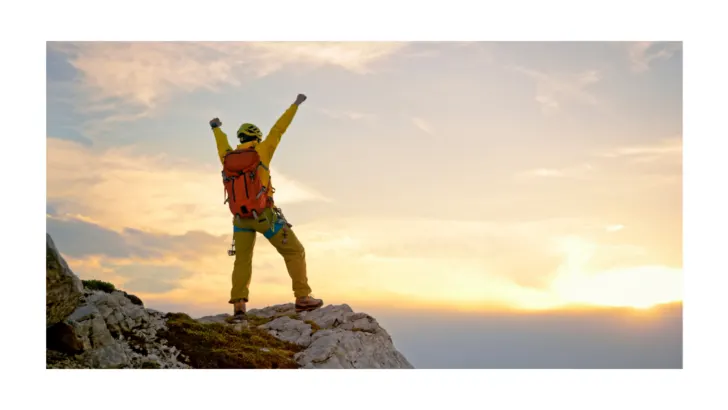
Yet, while the heights are reserved for the intrepid few, the world of hiking embraces diversity in its tapestry. Day hiking, akin to trail hiking, unfolds as a single-day journey—a leisurely meander through nature’s sanctuaries that unfolds within the span of sunlight. It’s a canvas for those who seek to savor nature’s beauty without the commitment of extended excursions.
Thru-hiking, on the other hand, extends an invitation to the daring souls who dare to traverse the full spectrum of a long-distance trail. This journey defies boundaries, encompassing a start-to-finish odyssey that demands not only physical prowess but an unwavering spirit. It’s a narrative of dedication, where hikers step into the rhythm of the trail, unraveling stories etched by landscapes and memories.
In the grand tale of hiking, each type is a chapter—a unique perspective that adds depth and richness to the mosaic of outdoor exploration. Mountaineering, day hiking, and thru-hiking unveil diverse facets of the trails—offering a spectrum of experiences that resonate with individual inclinations and the ever-thirsty spirit of adventure.
No matter what type of hiking you choose, it’s important to be prepared and know your limits. Hiking can be a fun and rewarding hobby or sport, but it’s important to approach it with respect for nature and safety in mind.
Is Hiking a Sport or Hobby Conclusion
Having delved into thorough research and analysis, I’ve come to the realization that hiking can fit the bill as either a sport or a hobby, depending on how each person approaches it.
While some may argue that hiking lacks the competitive aspect that defines a sport, there are various forms of hiking that do involve competition, such as speed hiking and trail running. Additionally, hiking can require physical exertion and endurance, making it a challenging activity that can be considered a sport.
However, for many people, hiking is simply a leisurely activity that allows them to connect with nature and enjoy the outdoors. It can be a way to relieve stress, improve mental health, and spend time with friends and family.
Ultimately, whether hiking is considered a sport or a hobby is a matter of personal perspective and interpretation. What matters most is that individuals engage in activities that bring them joy and fulfillment, whether that be through competition or leisurely exploration of nature.
Resources
- https://en.wikipedia.org/wiki/The_Wilderness_Society_(United_States)
- https://dribbble.com/shots/7170460-National-Geographic-Website-Redesign-Concept
- https://www.backpacker.com/
- https://americanhiking.org/
Frequently Asked Questions
What are the benefits of hiking as a hobby?
Hiking is a great way to stay active and improve your physical fitness. It also has numerous mental health benefits, such as reducing stress and anxiety levels. Additionally, hiking allows you to connect with nature and appreciate the beauty of the outdoors.
How does hiking compare to other sports?
Hiking is different from most sports in that it is not competitive and does not require a specific set of skills. However, it can still be physically challenging and provide a great workout. Hiking also allows you to explore new places and enjoy the scenery at your own pace.
What skills do you need for hiking?
While hiking does not require any specific skills, it is important to be prepared and knowledgeable about the terrain you will be hiking on. Basic navigation skills, such as reading a map and using a compass, can also be helpful. Additionally, it is important to have good physical fitness and endurance to successfully complete longer hikes.
What are some popular hiking trails?
There are countless hiking trails all over the world, ranging from easy and beginner-friendly to more challenging and strenuous. Some popular hiking trails include the Pacific Crest Trail in the United States, the Inca Trail in Peru, and the Milford Track in New Zealand.
How can hiking be incorporated into a fitness routine?
Hiking can be a great way to add variety to your fitness routine and challenge your body in new ways. It can be incorporated as a standalone workout or as a supplement to other exercises, such as strength training or cardio. Additionally, hiking can be a fun way to spend time with friends and family while getting exercise.
What gear is necessary for hiking?
The gear you need for hiking will depend on the terrain and length of your hike. Some basic essentials include comfortable and sturdy hiking shoes, appropriate clothing for the weather, a backpack with water and snacks, and a map or GPS device. It is also important to be prepared for emergencies by carrying a first aid kit and emergency supplies.
